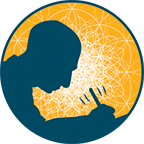Health and safety leaders I’m helping design their employee education programs understandably want to know the process. They tend to think of it in terms of revisions. They want to know how many revisions they would get. But that doesn’t really tell you much about the process of getting the awesome result you’re after. The process below is a better answer that helps you gauge how you’ll get to your great results.
Home Depot Mexico, 2022, Award Winning Illustrated Training Program. Client and graphic design by Intertek Catalyst.
How many revisions do we get?
Ok, I will answer this question, sort of. The short answer is six revisions... though the word "revisions" doesn't quite capture the process. I use a workflow that practically eliminates the need for any expensive revisions, for my studio and for the client. I think of it more as stages of approval, rather than a number of revisions. You could think of each stage as a revision, but sometimes there are no revisions needed in a given stage. The further we get through the stages, the smaller the changes should be getting.
A revision is a completely new image. This is VERY easy to do in the concept thumbnail chicken scratches stage. It gets more costly to do the later in the stages you get, especially If we’ve finished the artwork already. At that stage, the revision costs a whole new illustration. This escalating cost of revisions really complicates the answer to the “How many revisions do we get?” question.
Graphic Design Note: If my studio is also managing the graphic design side (Layout of your entire page with text blocks and titles and graphic elements) the graphic design staged process would follow along more or less the same way I describe below.
Approval and revision stages typically include:
Concept Development Stage, AKA the concept Thumbnail Chicken Scratches Stage: Here we have a creative meeting together with your team to clarify the purpose and the results for each item and the technical requirements for size and format. At this stage, we can have lots of revisions easily. Clients generally don't need more than three revisions at this stage, but we could easily go to 5 or six if need be..., except that adds to the back-and-forth time in approvals. Anyway, that rarely happens.
Concept Sketches, AKA Rough Roughs: Based on the above concepts I produce very rough concept sketches and send those to your team for review, approvals and changes. If any of these concepts are not working for you this is the best and most important stage to re-create or drastically modify the idea, so we give this stage careful consideration.
Changes to the Concept Sketches: I go back and develop new sketches for changes or total revisions to the concept and send you those for review, approval, or further changes.
Tight Pencils: I produce more detailed resolved drawings for you to review to make sure I have the details properly depicted. Look for details like what kind of equipment is used, uniform accuracy, terminology and generally having things look convincingly like your company's environment.
Ink and Colour: I produce finished-looking illustrations for your team to review. We look for colours that need or want changing, facial expressions, cultural detail, and equipment detail.
Final Art Stage: My studio makes a final pass on the artwork, tweaking the art if we can see something we want to improve, applying any of those detail change requests you've asked for, and making sure the work looks great and communicates clearly.
VERY rarely do we need a revision at the final art stage. By the time we’ve gotten there, the artwork has undergone a LOT of scrutiny. One or two times in my time using this process have I had to do a complete revision at the end. And that was because the training program content changed after we’d already finished the artwork. And even here it was just one of the 6 posters. That is no longer a revision. That’s a whole new poster. An addition to the original order.
The moral of the story: Ask not for the number of revisions. Ask for a process that produces your strong concept at the beginning when it’s very easy to make changes. This way you can stay on both your time and financial budget, and get great work that meets your needs.























